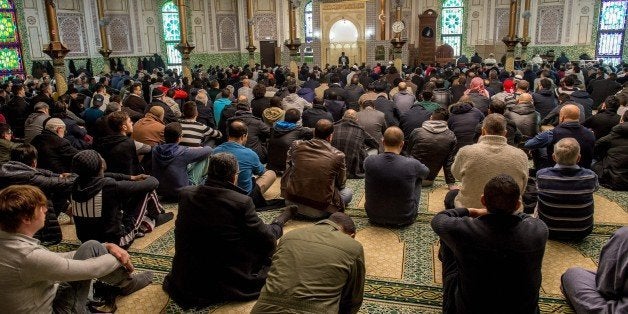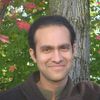
The tragic attacks in Brussels have raised questions regarding the scourge of "homegrown terrorists" that strike at the very core of modern aspirations of multicultural nation-states. Media pundits have been airing comparisons between Europe's "exclusion" and America's "inclusion" of the immigrant's identity. Having grown up as a Muslim in America while also living in Europe and Australia, I would like to offer some broader perspectives on this matter.
There is either a tendency to celebrate America as the most diverse land of opportunity or to lament the legacy of discrimination towards Muslims following September 11, 2001. However, the vast diversity and dispersion of Muslims in America suggests that the same fault lines that we have observed in Europe can be found in the United States as well but are manifest in different ways.
Although immigrant Muslims in America are generally of higher socioeconomic status than their European counterparts, African American Muslims, who account for about a quarter of all Muslims in America, remain economically marginalized and dissatisfied with their lives. Yet, there has been scant evidence of the African-American Muslim community's involvement in recent terrorism.
Data points to draw any patterns are few and far between in both America and Europe. The San Bernardino terrorist attack was perpetrated by a home-grown Asian American and his immigrant wife who appear to have been independently radicalized. The Madrid bombing in 2004, which killed 196 individuals, was perpetrated by immigrants and visitors. The London bombings of 2005 involved a British-Jamaican convert to Islam along with British born Pakistani-origin terrorists.
Causality for radicalization remains quite elusive in the context of American and European Muslims. Instead of trying to find a specific pattern, it is more instructive to consider multiple pathways of radicalization by better understanding the broad spectrum of daily lives of Muslims.
Perhaps the most nuanced documentary on the topic was made in 2008 by an anthropologist and erstwhile Pakistani High Commissioner to the United Kingdom, Akbar S. Ahmed titled Journey into America. in which some of the struggles that Muslim-Americans face within their own communities, as well as externally, were presented with care and persuasion.
Traveling with a group of American students through scores of Muslim communities in North America from "sea to shining sea", the documentary attempted to show how the clash of cultures that is so frequently talked about is affecting daily lives for Muslims and non-Muslims alike. The film starts with the "Muslim Day Parade" in New York City, which is greeted with celebration by one side of the street and invective on the other. While some non-Muslim onlookers are cheering on the crowds as a mark of American diversity, others are jeering them with slogans of "no sharia", and defamatory slogans. There are even some Muslims themselves who are seen opposing the march as a mark of subservience and acquiescence to the dominant culture. The parade is an apt allegory for the messy state of Muslim affairs in America which continues to struggle with reconciling its multiple identities.
Most significantly, the documentary recognizes that the greatest challenge to Islamic identity in America comes from within the Muslim community, which continues to be fragmented by fanaticism. In one telling story, the documentary notes the story of Farhan in Michigan, the president of the Muslim Students Association at a local college, who was attacked by other Muslims and barely escaped being run-over with a car by the assailants. His only "crime" in the eyes of his jihadist attackers was that he was trying to promote dialogue between Muslims, Jews and Christians. Such stories of Muslims attacking Muslims in America are not isolated and frequently, progressive Muslims receive threats by radical elements for spreading "fitna" (an Islamic term that connotes 'mischief' in a theological sense).
The texture of American Muslims ranges from relatively impoverished African-American communities in tough urban neighborhoods to wealthy South Asian doctors and Arab traders spread out across the country. Their experiences are just as varied as the vast landscape of the continent. However, there is definitely a greater adjustment challenge for Muslims than for other faith traditions in America, partly because of their own reluctance to change and partly because of embedded prejudice within the host society.
Following 9/11, there has been far greater polarization across the country on issues pertaining to Islam. Many Muslims have become defensive and more assertive of their Islamic identity by boasting beards and wearing hijab while others have been totally repulsed by their religion altogether. Similarly, some non-Muslims have either come forth to defend Islam at the behest of "diversity", while others have been attracted to Islamophobic websites that perniciously cast doubt on all practicing Muslims.
However, by engaging at all levels of governance, American Muslims are slowly beginning to get more "mainstreamed" within American political discourse as Muslims are in European political systems as well. As an example, Dr Ahmed interviewed Bernie Stone, the late vice-mayor and alderman of Chicago, who established "Jinnah Street" in the Devon neighborhood of Chicago alongside "Gandhi Road" (named after two prominent South Asians independence leaders -- Jinnah a Muslim and Gandhi a Hindu). The alderman supported five mosques being established in the area and noted jovially that he gets more votes from Muslims than his own Jewish brethren!
Progressive versus traditionalist Muslims are beginning to voice their dissent through competitive lobbying rather than fist fights or fatwas. The fanatics are still there and their dormant presence cannot be ignored, but increasingly Muslim communities in America are realizing that they must marginalize such elements. At the end of the day, Islamic identity in America will need to follow the Hebrew advice noted by Dr Ahmed that is enshrined in two words Tikkun Olam which means to strive in healing a fractured worldly relationship.
To fight extremism, Europe and America alike must be willing to grapple with complex causality and resist linear explanations for radicalization. Former secretary of defense Donald Rumsfeld, in a confidential memorandum that was subsequently released, posed the central question about the American war on terror: "Are we capturing, killing or deterring and dissuading more terrorists every day than the madrassahs and the radical clerics are recruiting, training and deploying against us?" Starting with Rumsfeld's question, more than a decade ago, Professor Mark Danner has commendably approached this issue in detail and his answer is a resolute "no". Danner quotes counterinsurgency specialist John Arqullia who compares the US reaction as highly mercurial: "We have taken a ball of quicksilver, and hit it with a hammer". The irony of this analogy is that it also shows how elusive our statistics might be ascertaining the actual number of atomized extremists is just as difficult as trying to quantify mercury particles in motion.
The only way forward to understanding radicalization of Muslims as well as other religious and secular communities is to consider the "push" and "pull" factors that can impact a wide array of demographics. We should not be afraid to ask questions about the underlying political causes which can lead psychologically vulnerable or deranged individuals to resort to violence. Indeed, socio-psychological research has also suggested that the same individuals who are capable of pernicious suicidal behavior are also capable of extreme positive altruism if their motivations can be positively channeled. Research in Europe with non-Muslim "Right Wing extremists" has also revealed the potency of "parochial altruism" in determining the impact of propaganda that comes forth when threats are perceived.
At the end of the day Muslim experiences in America and Europe, as well as the resultant or pre-existing Islamophobia should be considered as part of a common human story. There may be some lessons on policy interventions to prevent radicalization that could be exchanged across the Atlantic or across the Pacific. However, let us not be tempted into complacence, nor be intimidated by adherents of one particular theory of radicalization.
